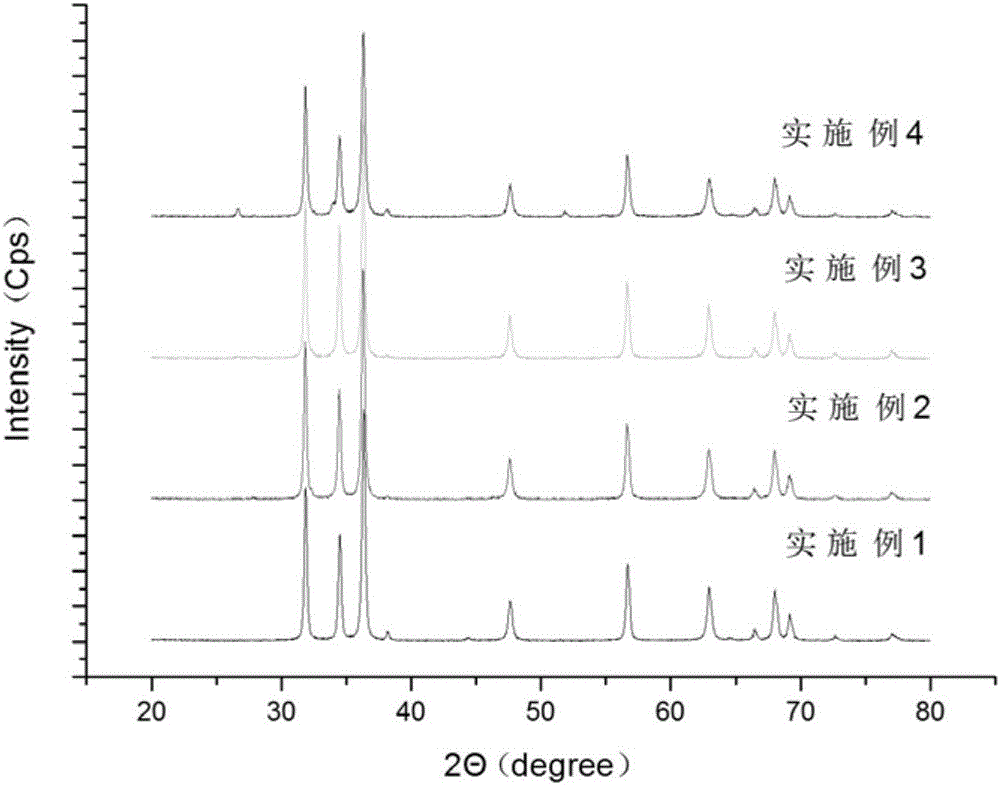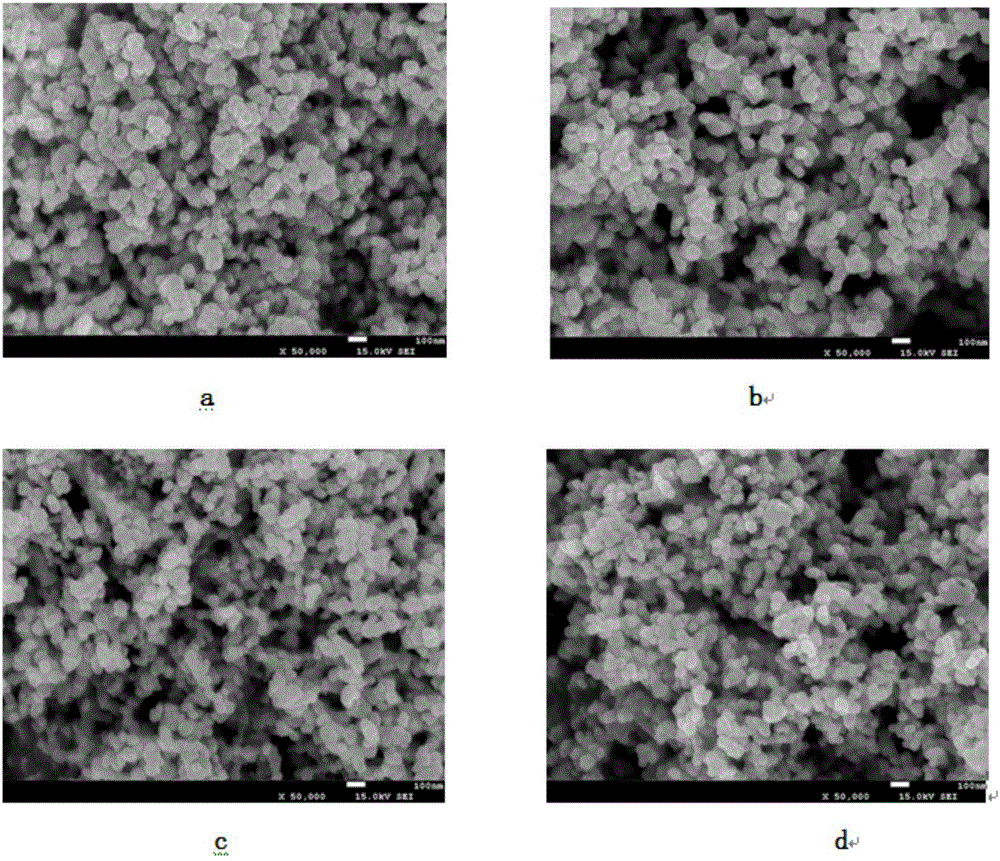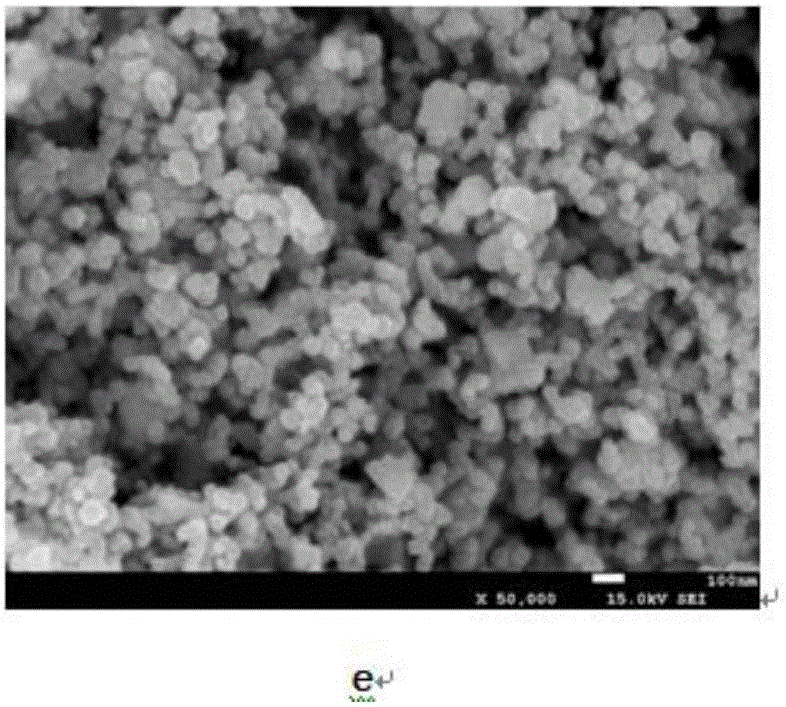Tin-silver co-doped nano-zinc oxide as photocatalyst and preparation method thereof
A nano-zinc oxide, photocatalyst technology, applied in chemical instruments and methods, physical/chemical process catalysts, metal/metal oxide/metal hydroxide catalysts, etc., can solve the problems of unfavorable industrial production applications and high production costs, To achieve the effect of reducing the amount of silver, high crystallinity, and reducing production costs
- Summary
- Abstract
- Description
- Claims
- Application Information
AI Technical Summary
Problems solved by technology
Method used
Image
Examples
Embodiment 1
[0026] The preparation method of tin-silver co-doped nano zinc oxide as photocatalyst in the present embodiment is as follows:
[0028] At indoor natural temperature (the inventor once prepared nano-ZnO in different seasons: summer, autumn and winter, and indoor temperature has no influence on the experimental results), zinc nitrate (5.9979g) of 0.01996mol, 0.00004mol tin tetrachloride were mixed under stirring (0.0142g), 12g of glucose, 0.03mol of tartaric acid were dissolved in 60mL of deionized water to form a solution, then 0.15mol of acrylamide and 0.03mol of methylenebisacrylamide were added in sequence, and stirred evenly to obtain a colorless transparent sol. The obtained colorless transparent sol was heated in a water bath at 90°C for 1 hour to obtain a white wet gel. The wet gel was placed in a blower constant temperature drying oven and dried at 120°C for 24 hours to obtain a xerogel. The xerogel was ground into After the powder is sintered ...
Embodiment 2
[0035] The preparation method of tin-silver co-doped nano zinc oxide as photocatalyst in the present embodiment is as follows:
[0036] (1) Tin doping
[0037]At indoor natural temperature (the inventor once prepared nano-ZnO in different seasons: summer, autumn and winter, and indoor temperature has no effect on the experimental results), 0.0199mol of zinc nitrate (5.9789g), 0.0001mol of tin tetrachloride were mixed , 12 g of glucose and 0.03 mol of tartaric acid were dissolved in 60 mL of deionized water to form a solution, and then 0.15 mol of acrylamide and 0.03 mol of methylenebisacrylamide were added in sequence, and stirred evenly to obtain a colorless transparent sol. The obtained colorless transparent sol was heated in a water bath at 90°C for 1 hour to obtain a white wet gel. The wet gel was placed in a blower constant temperature drying oven and dried at 100°C for 24 hours to obtain a xerogel. The xerogel was ground into After the powder is sintered at 650°C for 5 ...
Embodiment 3
[0042] The preparation method of tin-silver co-doped nano zinc oxide as photocatalyst in the present embodiment is as follows:
[0043] (1) Tin doping
[0044] At indoor natural temperature (the inventor once prepared nano-ZnO in different seasons: summer, autumn and winter, and indoor temperature has no influence on the experimental results), zinc nitrate (5.9498g) of 0.0198mol, 0.0002mol tin tetrachloride were mixed under stirring (0.0708g), 12g of glucose, 0.03mol of tartaric acid were dissolved in 60mL of deionized water to form a solution, and then 0.15mol of acrylamide and 0.03mol of methylenebisacrylamide were added in sequence and stirred evenly to obtain a colorless transparent sol. The obtained colorless transparent sol was heated in a water bath at 90°C for 1 hour to obtain a white wet gel. The wet gel was placed in a blower constant temperature drying oven and dried at 120°C for 24 hours to obtain a xerogel. The xerogel was ground into After the powder is sintered...
PUM
 Login to View More
Login to View More Abstract
Description
Claims
Application Information
 Login to View More
Login to View More - R&D
- Intellectual Property
- Life Sciences
- Materials
- Tech Scout
- Unparalleled Data Quality
- Higher Quality Content
- 60% Fewer Hallucinations
Browse by: Latest US Patents, China's latest patents, Technical Efficacy Thesaurus, Application Domain, Technology Topic, Popular Technical Reports.
© 2025 PatSnap. All rights reserved.Legal|Privacy policy|Modern Slavery Act Transparency Statement|Sitemap|About US| Contact US: help@patsnap.com



